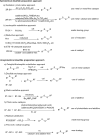A facile, catalyst- and additive-free, and scalable approach to the photochemical preparation of disulfides from organosulfenyl chlorides
- PMID: 39399260
- PMCID: PMC11467717
- DOI: 10.1039/d4ra04568h
A facile, catalyst- and additive-free, and scalable approach to the photochemical preparation of disulfides from organosulfenyl chlorides
Abstract
A novel, clean and efficient protocol for the preparation of disulfides has been developed through the photochemical radical homo- and cross-coupling reaction of sulfenyl chlorides under LED irradiation and without the use of any catalyst and additive. The representative photochemical homo-coupling of trichloromethyl sulfenyl chloride has been successfully conducted on kilogram-scale in a continuous flow mode. The solvent and the main byproduct can be recovered in high yields, which makes the approach be highly atom economical.
This journal is © The Royal Society of Chemistry.
Conflict of interest statement
The authors declare no conflicts.
Figures







References
-
- He L. Wang L. L. Wang Z. S. Li T. T. Chen H. Zhang Y. N. Hu Z. P. Dimitrov D. S. Du J. J. Liao X. B. J. Med. Chem. 2021;64:15716–15726. - PubMed
-
- Kumar S. S. Bharati M. S. S. Rao S. V. J. Phys. D Appl. Phys. 2023;37:56.
-
- Cunneen J. I. Shipley F. W. J. Polym. Sci. 1959;36:77–90.
LinkOut - more resources
Full Text Sources

